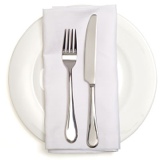Information
-
Audit Name
-
Document No.
-
Conducted on
Audit information
-
Date of Meal Service Audit
-
Reason for Audit/notes:
-
Please select the Dining Room
- A2
- A3
- C1W
- C1E
- C2W
- C2E
- C3E
- C3W
- D Wing
- E1
- E2
-
Please select the meal
-
Select time all residents present in the dining room
-
Select time all staff present in the dining room
Observation of Staff
Preparation
-
Are the daily and weekly menus communicated to residents? R73(1)1
-
Are there appropriate furnishings and equipment in resident dining areas, including comfortable dining room chairs, tables at an appropriate height to meet the needs of all residents, and appropriate seating for staff that are assisting residents to eat? R73(1)11
-
Are foods and fluids served at a temperature that is both safe and palatable to the residents? R72 (2)(b) i.e. temperatures recorded?
-
Are all foods and fluids prepared, stored, and served using methods which preserve taste, nutritive value, appearance and food quality? R72(3)(a)
-
Are food and fluids prepared, stored, and served using methods which prevent adulteration, contamination, and food borne illness? R(72)(3)(b) i.e. hand washing or utensil handling, fridge temperature being taken in am and pm?
-
Subject to compliance with subsection 71(6) of the regulation, has the residents' Council reviewed meal and snack times R73(1)2
-
Are all menu substitutions communicated to residents and staff? R 72(2)(f)
-
Appropriate utensils are laid out prior to service?
-
Appropriate condiments are available. i.e. salad dressing, plum sauce, ketchup
-
The nursing refers to Drink Lists prior to meal service. Notes changes.
-
Cold fluids are kept on ice or refrigerated. These items and beverages are at max 40C.
-
Thermometer is wiped with alcohol swab before use, wipes in between use with different foods.
Sanitation
-
Is the home, it's furnishings and equipment clean and sanitary? S15(2)(a) i.e. :are cleaning schedule readily accessible and signed off?
-
Residents hands sanitized with hand sanitized prior to meal?
-
Condiment containers are clean, refrigerated between meals and filled.
-
Hands are washed after resident transport and after handling dirty dishes.
-
Cutlery, cups, glasses are not handled by touching the part put in the mouth.
-
Dirty dishes are kept away from clean dishes at all times.
-
Appropriate scoops/utensils are used instead of hands and correctly used.
-
Chemicals and cleaning supplies are secured and in labelled containers as per WHMIS.
-
All items for tray service are covered and all meal components offered.
Service
-
Is meal service provided in a congregate dining setting unless a resident's assessed needs indicate otherwise? R73(1)3
-
Are residents monitored during meals, including residents eating in locations other than dining areas? R73(1)4
-
Is there a process to ensure that food service workers and other staff assisting residents are aware of the residents' diets, special needs and preferences? R73(1)5
-
Is each resident offered planned menu items at each meal and snack? R71(4)
-
Are meals served course by course unless otherwise indicated by the resident or the residents' assessed needs? R73(1)8
-
Is sufficient time provided for resident s to eat at their own pace? R73(1)7
-
Are residents provided with any eating aids, assistive devices, personal assistance and encouragement required to safely feat and drink as comfortably and independently as possible? R73 (10)(9)
-
Is a full breakfast available to residents up to at least 8:30am and the evening meal not served before 5:00pm? R71(6)
-
Posted table rotation is being followed.
-
Service is in this order: 1)Those who can feed themselves. 2) Residents who require feeding. 3) Residents on tray service in their rooms.
-
Residents receive choice, including those on special diets, ( i.e. low lactose). Those who are not able to make choice have this documented on the meal service notes.
-
PSW provides name of resident and meal choice to the Dietary Aide.
-
Residents receive adaptive feeding equipment. (Review if any more are required) as per list.
-
Portions are consistent with therapeutic spreadsheets.
-
Residents receive potion size according to meal notes. i.e. half, large?
-
All residents receive all meal components, and proper order i.e. soup before entree.
-
Second helpings are being offered to residents as diet appropriate?
-
Dietary Aide refers to diet list during dessert service.
-
The entree is completed by 75% of the table before dessert is served.
Total Feeding
-
Are proper techniques used to assist residents with eating, including safe positioning of residents who require assistance? R73(1)10
-
Do staff members assist only one or two residents at the same time who need total assistance with eating or drinking? R73(2)(a)
-
Are residents who require assistance with eating or drinking only served a meal when someone is available to provide assistance? R73(2)(b)
-
Residents are positioned 90 degrees upright with chin in tuck position if possible.
-
Feeder sits at eye level or below for feeding.
-
Staff inform the resident what they are eating, converse with resident.
-
Clean cutlery is used for each course.
-
Food is not stirred together (unless in care plan).
-
Napkin or cloth is used to wipe the mouth. (Not a spoon)(Not a bib)
-
Sufficient time is allowed for swallowing.
Signature
-
Please sign














